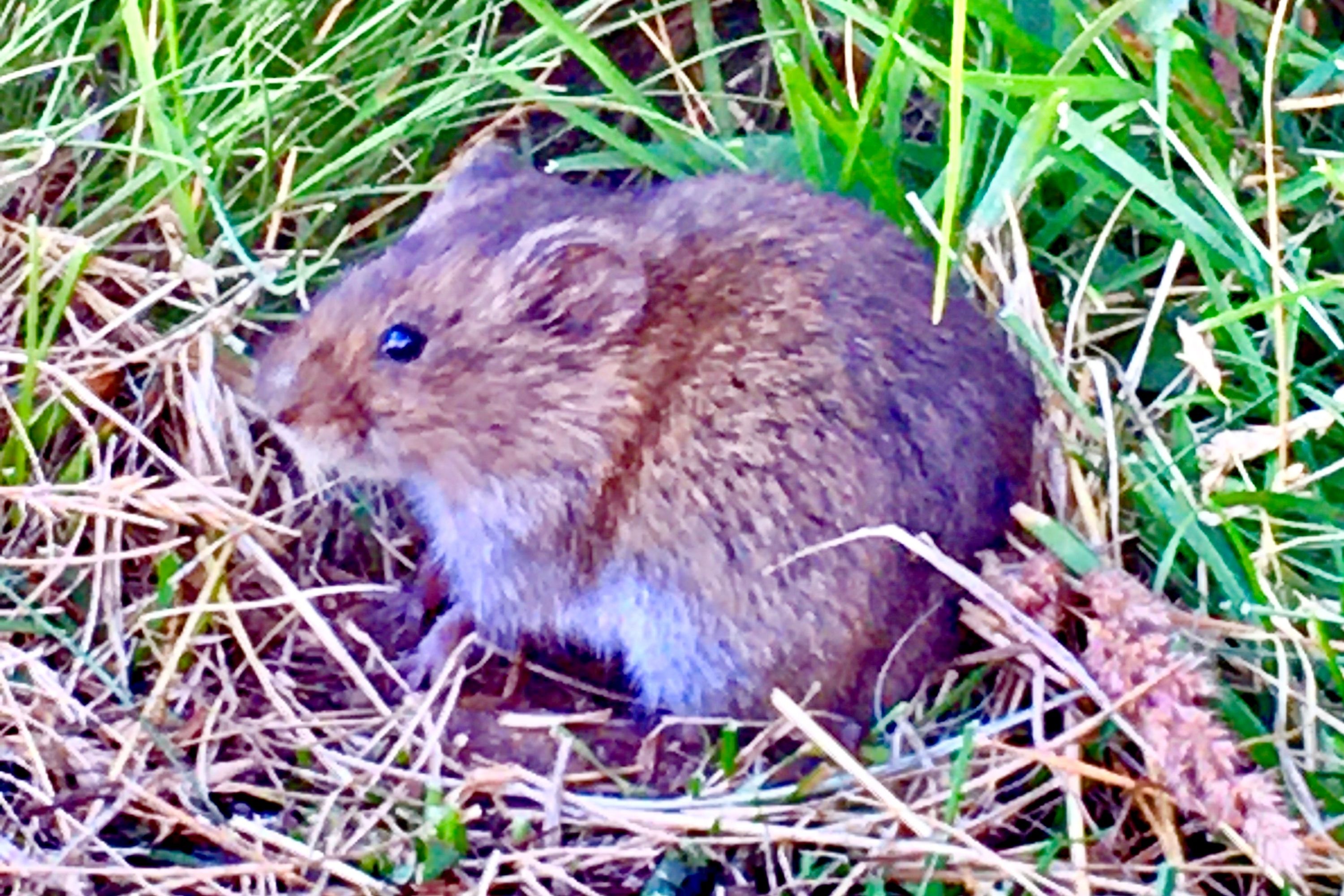California vole
(Microtus californicus)

Description
The California vole (Microtus californicus) is a type of vole which lives throughout much of California and part of southwestern Oregon. It is also known as the "California meadow mouse", a misnomer as this species is a vole, not a mouse. It averages 172 mm (6.8 in) in length although this length varies greatly between subspecies. The California vole is a medium-sized vole, and a typical member of its group in appearance. Males range from 152 to 196 mm (6.0 to 7.7 in) in head-body length, with a 42 to 58 mm (1.7 to 2.3 in) tail. Females are significantly smaller at 149 to 182 mm (5.9 to 7.2 in) in length with a 38 to 53 mm (1.5 to 2.1 in) tail. Males weigh from 41 to 81 g (1.4 to 2.9 oz), and females from 36 to 63 g (1.3 to 2.2 oz). Variation between different subspecies, though, is considerable, with the southern subspecies tending to be larger than those found further north. The body is covered with cinnamon to tawny olive fur, ticked with occasional darker hairs, and fading to a medium grey on the underside. The tail is black above and grey below. The whiskers and feet are grey in color, with a patch of white fur near the anus. Between subspecies, those native to more highland habitats tend to be more reddish in color, and those in marshier environments tend to be darker. Males have a pair of scent glands on the hips, which are used to mark their trackways. Females have four pairs of teats, two in the chest, and two closer to the groin. The California vole is found from El Rosario in Baja California in the south, through much of California and as far as Eugene, Oregon in the north. It is, however, absent from most of the deserts of southeastern California and from the extreme northeastern and northwestern corners of the state. It inhabits a range of different grassland habitats, from wet coastal marshland to dry uplands and savannah. The California vole is herbivorous, feeding mainly on grasses and sedges, supplemented by other flowering herbs. Preferred foods include wild oats, ryegrass, and brome grass, although all of these are introductions from Europe, and therefore cannot represent the animal's original diet. They can become an agricultural pest, causing widespread damage especially to fields of artichokes, but also to crops such as alfalfa, potatoes, and asparagus.
Taxonomic tree:







